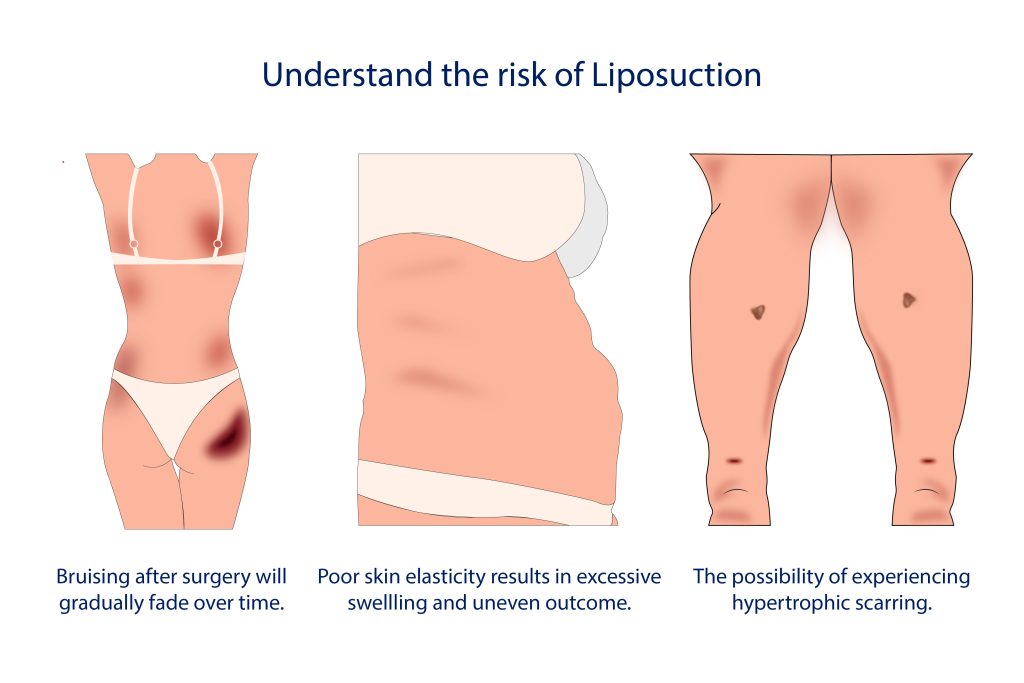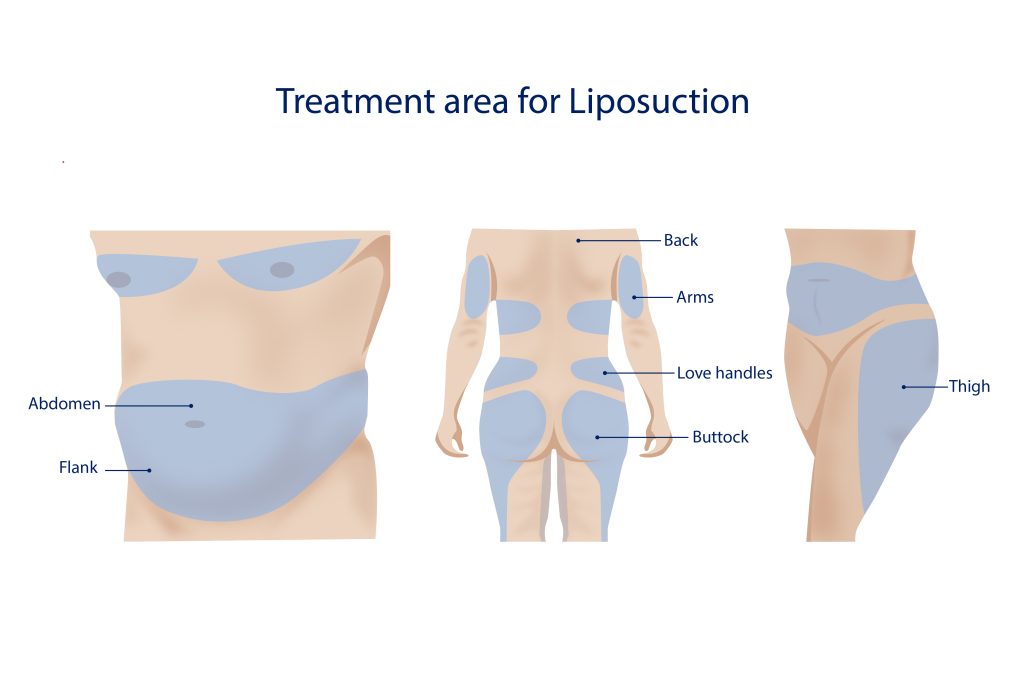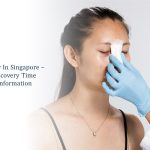Liposuction is a widely popular cosmetic surgery that can help remove stubborn fat deposits that could not be shed off through diet and exercise to achieve a more toned and sculpted appearance.
If you are considering embarking on a liposuction journey can be both an exciting and transformative experience. Understanding the various aspects of preparing for a liposuction surgery not only helps manage expectations but also contributes to a smooth recovery and optimal outcomes.
In this article, we will guide readers through the essential steps they need to take to prepare for a liposuction procedure. From choosing a suitable surgeon to understanding the procedure itself, we’ve got it covered.
So, let’s dive in and explore how one can be better prepare for an upcoming liposuction procedure, step by step.
1. Research and Choose a Qualified Surgeon
It is imperative to conduct thorough research and select a board-certified and qualified plastic surgeon for a liposuction procedure. This crucial step ensures that one is more likely to achieve successful results and minimize potential side effects. By choosing an experienced plastic surgeon with appropriate certifications and credentials, one can trust their expertise and training.
2. Schedule a Consultation With Your Surgeon

The next step is to schedule a consultation with the shortlisted plastic surgeon. During the visit, liposuction goals will be discussed, pertinent questions will be asked, and all information provided to make free and informed decisions about the procedure. The cosmetic surgeon will assess the body contouring needs by focusing on the areas with unwanted fat.
During the consultation, providing the surgeon with detailed information, such as medical history, lifestyle habits, and any drug allergies, is vital. Additionally, discussing aspects such as the recovery period, after-care, downtime, cost, and potential follow-up procedures to maintain the surgery results is important. It is also recommended to ask for patient testimonials, before-and-after photos, or case studies for evaluation.
By the end of the consultation, the surgeon will devise an appropriate plan for the liposuction procedure, ensuring expected outcomes and a smooth recovery.
3. Discuss Your Medical History with Your Surgeon
Remember to discuss medical history, past surgeries, and relevant health records during the consultation with the surgeon. If taking any medications, particularly those for high blood pressure, it is crucial to inform the surgeon so they can develop the appropriate treatment plan. This step is important as certain medications can interfere with the surgery and lead to unwanted side effects.
In order for the surgeon to assess suitability for liposuction, providing a weight loss background is necessary. This information will assist them in determining whether the criteria for suitability are met. It is crucial to have a healthy body mass index (BMI) before undergoing liposuction. Typically, individuals with a lower BMI (<30) tend to achieve better outcomes from liposuction compared to those with higher BMI values.
Based on the medical history, the surgeon may also request lab tests to ensure overall health aligns with the procedure.
4. Understand the Risks and Benefits of Liposuction

Before deciding to undergo liposuction, having a clear understanding of the benefits and risks associated with the procedure is essential. Liposuction is a cosmetic intervention that can enhance body contours and boost self-confidence. However, it should not be considered a treatment for obesity. The procedure effectively removes unwanted fat pockets from various areas of the body, resulting in improved body contouring.

Being aware of the associated risks of liposuction is important. These risks include bruising, infection, cannula breakage, and uneven fat removal.
5. Follow a Healthy Diet and Exercise Routine Before Your Procedure
Maintaining a healthy and balanced diet is crucial, especially when preparing for liposuction. Focus on consuming foods high in fiber and low in fats. Incorporate healthy fats, vitamins, protein, and plant-based foods into the diet plan while avoiding fried foods, processed sugars, and unhealthy carbohydrates. Additionally, staying hydrated by drinking plenty of water is essential.
Maintaining a regular exercise routine before the liposuction procedure is also important. Regular physical activity promotes good circulation and aids in the recovery process immediately after surgery.
6. Avoid Certain Medications and Supplements
The plastic surgeon may advise refraining from taking certain medications, supplements, and vitamins that could increase the risk of bruising or excessive bleeding during the procedure. Blood-thinning medications (such as aspirin) and supplements (such as vitamin E) that impede the blood clotting process should be discontinued one to two weeks before the surgery. This precaution is necessary as the liposuction procedure is delicate, and proper blood clotting is vital for safety.
7. Stop Smoking
Smoking not only hinders the body’s ability to heal but also increases the likelihood of post-surgical complications such as bleeding and bruising. Quitting smoking several weeks before the surgery can accelerate the recovery time and reduce the risk of complications.
8. Arrange for Transportation and Recovery Assistance
Driving yourself home immediately after the surgery is not recommended due to the medications and anesthesia administered during the liposuction procedure. It is essential to have someone available to drive you home safely.
After the liposuction surgery, the plastic surgeon will advise resting for the first few days to ensure complete recovery. Therefore, arranging for care and assistance in daily activities such as driving, meal preparation, household chores, and childcare in advance is crucial for a smooth recovery and optimal outcomes.
9. Prepare Your Home for Recovery
Upon returning home after the surgery, 10-14 days of rest and recuperation will be required. To ensure a peaceful and relaxing environment, consider taking the following steps:
- Rearrange essential items to easily accessible locations to minimize the need for reaching or bending.
- Organize your closet with comfortable and loose-fitting clothing that is easy to put on and remove.
- Stock up on snacks and easy-to-make foods to minimize the need for extensive meal preparation.
- Arrange for someone to provide care and support during the initial days, as assistance may be needed with daily tasks.
- Creating a comfortable and convenient environment at home will aid in a smoother recovery process.
10. Keep Your Expectations Realistic about Results
While liposuction can indeed enhance body contours and boost self-confidence, it is important to maintain realistic expectations. Liposuction is not a magical solution that can eliminate all insecurities. It is essential to understand that all surgical procedures carry some degree of risk, and having an overly precise image of your post-surgery appearance can lead to unrealistic expectations. To gain a better understanding of potential results, you can request to review before-and-after photos provided by your surgeon.
The Bottom Line
When considering liposuction in Singapore or any location, the goal is to strive for optimal outcomes throughout the entire process, from consultation to recovery. Therefore, it is vital to adequately prepare yourself for the procedure. By following the guide mentioned above, you can better prepare for your liposuction procedure, ensuring desirable results and a smooth recovery. The presence of a skilled plastic surgeon and adopting a suitable mindset prior to the procedure can contribute to achieving the desired aesthetic outcomes.







